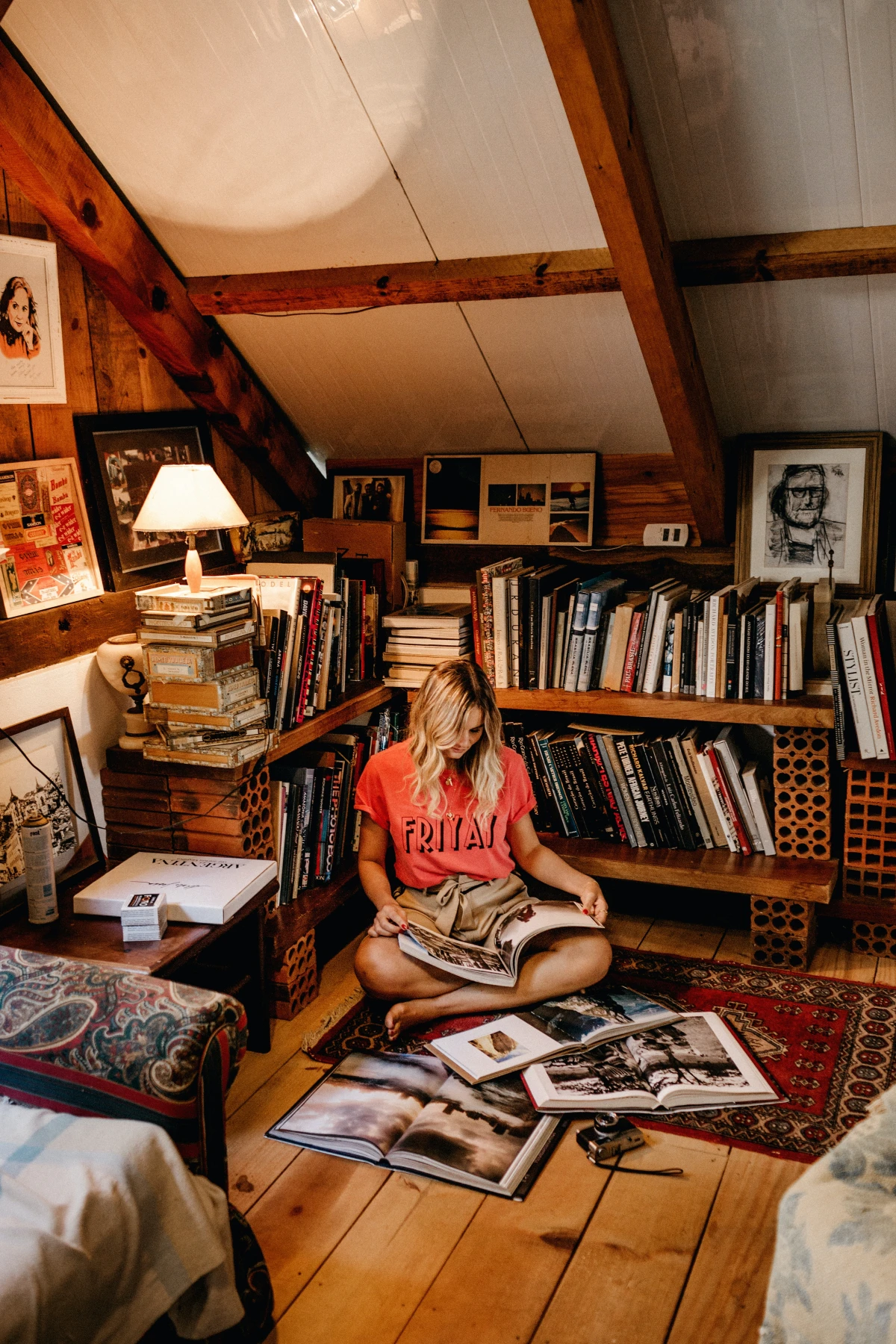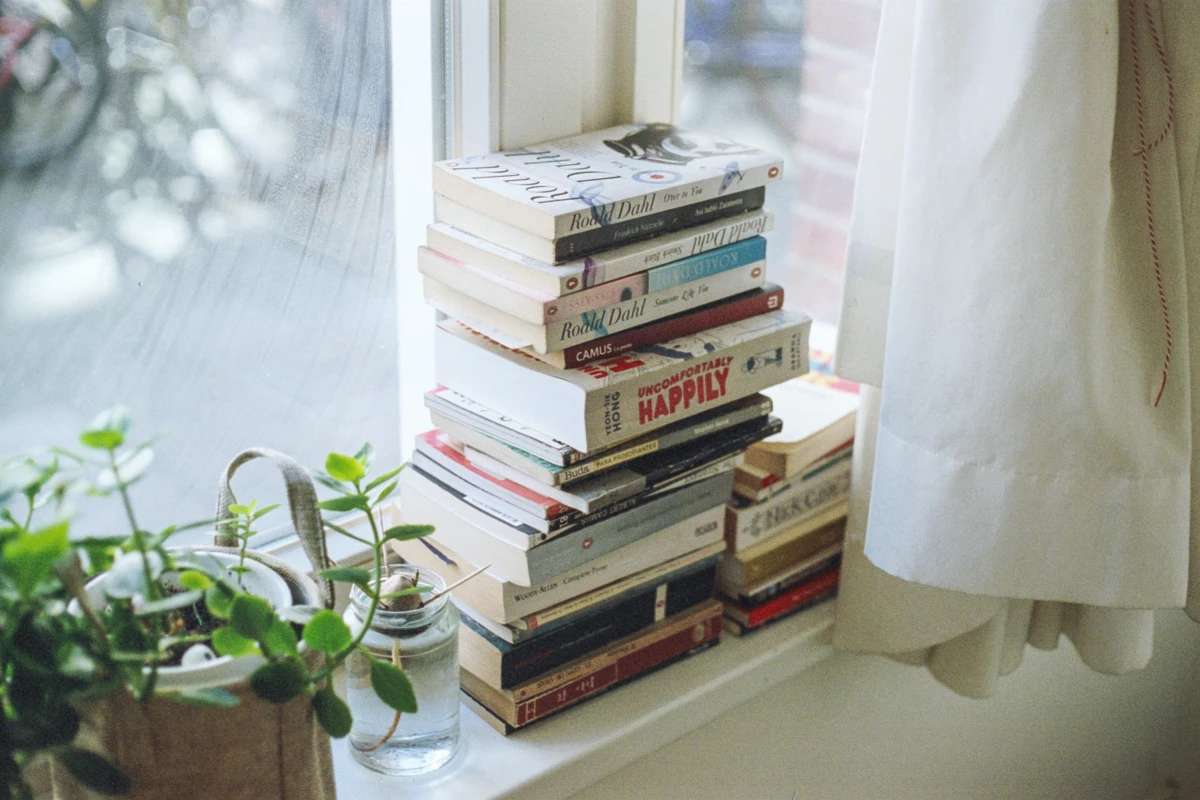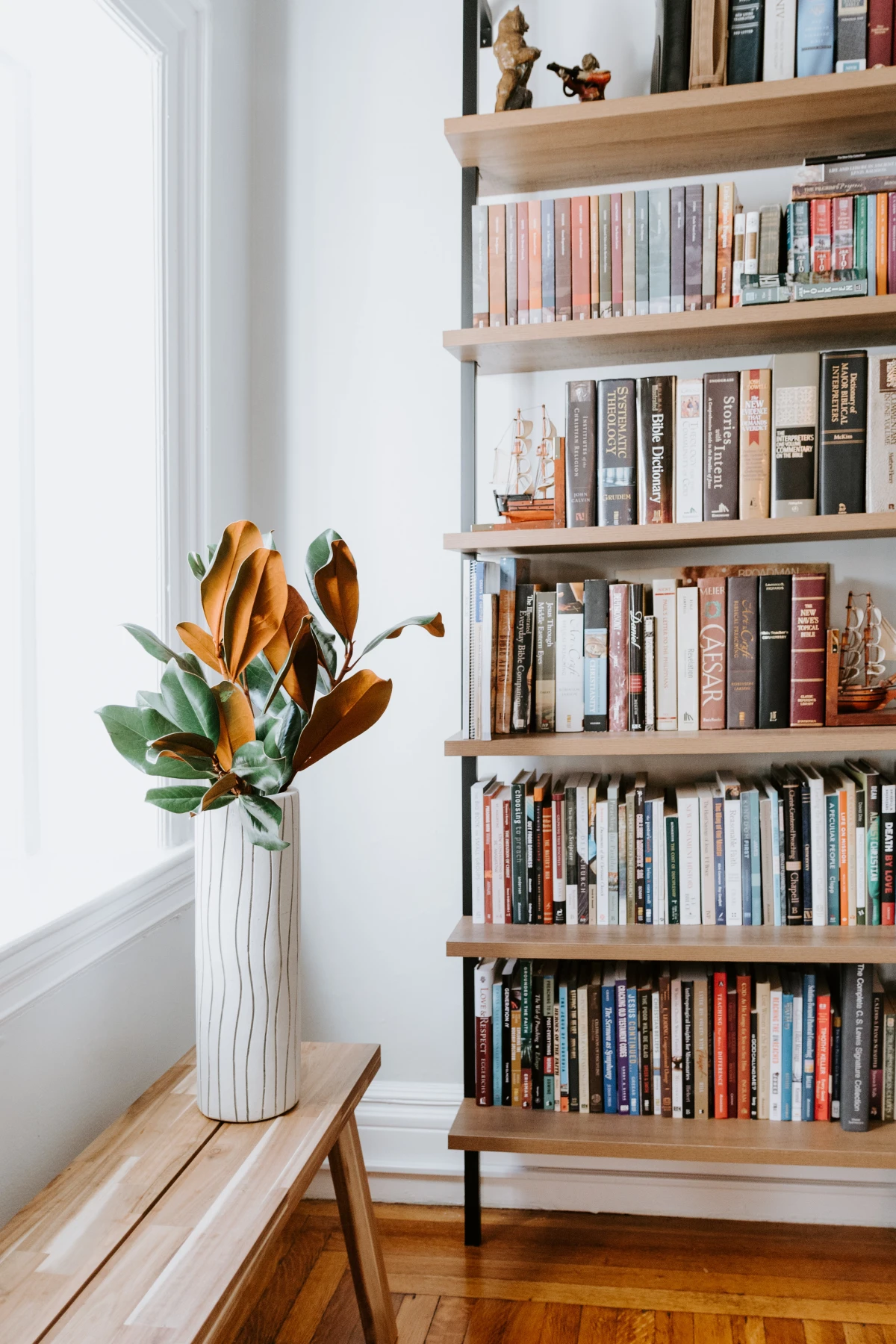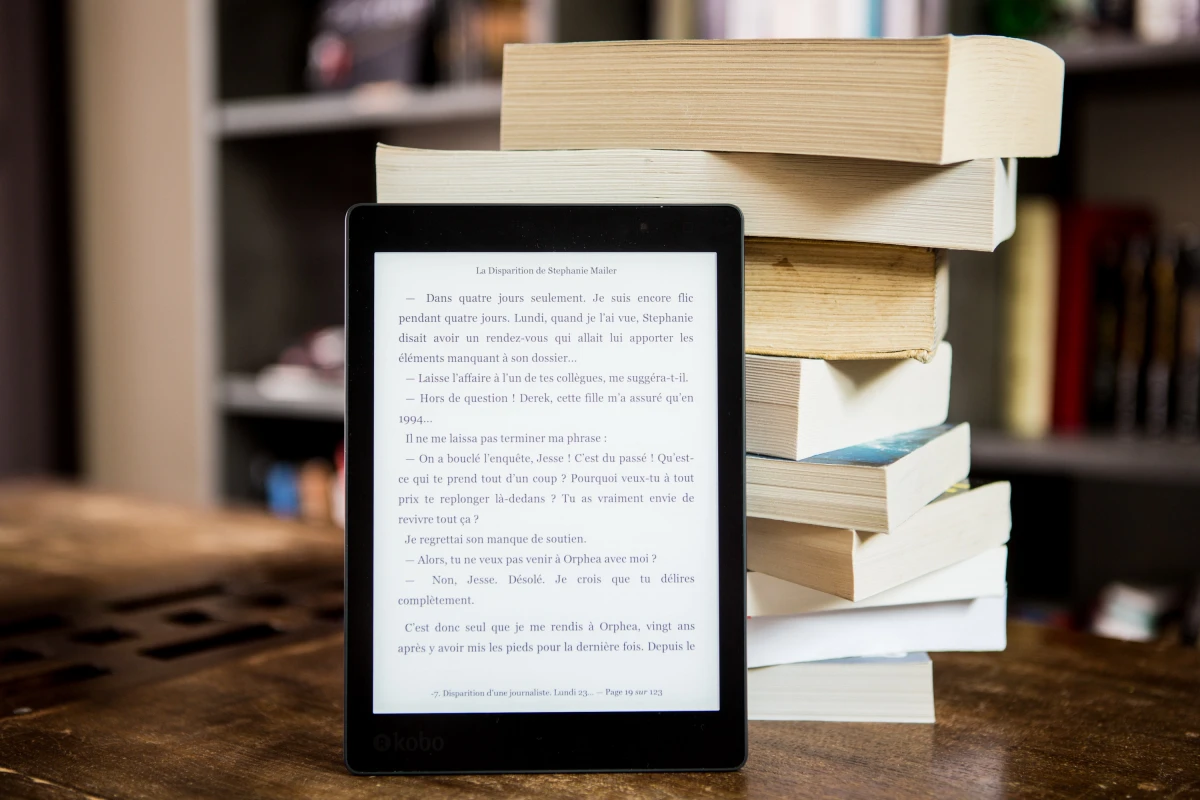Your Bookshelf is Overstuffed. Here’s How to Cull Your Collection Without the Guilt.
Over the years, I’ve spent a lot of time around books—from handling priceless rare editions to helping families sort through massive collections inherited from loved ones. I’ve seen it all: pristine libraries behind glass and teetering stacks in musty basements. The one thing that’s always the same? The powerful connection people have with their books. Let’s be honest, they’re not just paper and ink. They’re a map of who we used to be, who we want to be, and all the quiet moments in between. That’s what makes letting them go so incredibly tough.
In this article
A lot of decluttering advice you see online is way too impersonal. It’s all about speed and empty shelves. But that misses the point entirely. Culling a personal library isn’t about creating a void; it’s an act of curation. It’s about honoring the books you truly love by giving them room to breathe and finding new homes for the ones that have already served their purpose in your life. It’s a craft, really, and I’m going to walk you through the process I use—a method that respects both the books and you.

First, Let’s Talk About Why This Is So Hard
Before you even think about touching a single spine, it helps to understand what you’re up against. This isn’t just about moving objects around. It’s an emotional workout, and knowing the ‘why’ makes the ‘how’ a whole lot easier.
The Psychology: It’s a Relationship, Not Just an Object
We have a unique relationship with books. We might keep a dense history book because it represents a smarter version of ourselves we aspire to be. Tossing it can feel like giving up on that dream. Other books are pure nostalgia—a gift from someone special, a novel you devoured on a life-changing trip, or a cookbook with sauce stains from countless family dinners. The first step is just to acknowledge this. You’re not just ‘getting rid of stuff.’ You’re editing the story of your life, and that deserves some thought.
The Science: Your Books Are Literally Decaying
Here’s a dose of reality that can actually help you make decisions. Most modern books, especially the paperbacks we all love, are printed on acidic, wood-pulp paper. There’s a component in that paper called lignin, and as it breaks down over time, it creates acids that turn the pages yellow and brittle. It’s an unstoppable chemical process that light and heat make even faster. That’s why old paperbacks sometimes just crumble.

By the way, that classic “old book smell”? It has a name: bibliosmia. It’s the scent of the chemicals released as the paper decays. If you’ve ever smelled a hint of vanilla, that’s from a chemical called vanillin, which was once a component in the paper! It’s kind of a beautiful, bittersweet process.
On the flip side, some really old books or high-quality modern hardcovers are printed on acid-free rag paper, which is much more stable and can last for ages. Knowing this helps. That brittle, yellowing paperback is already on its way out. Maybe it’s time to let it go or find a new copy. But that sturdy hardcover might be a keeper.
Heads up on environmental damage, too. That musty smell from a basement is almost always mold. I’ve seen it ruin countless books. Mold spores aren’t just bad for the paper (causing those brown spots called ‘foxing’); they can trigger allergies and respiratory issues. Direct sunlight is another enemy, bleaching spines and speeding up that acid decay.

Part 2: Setting Up Your Workspace (The Pro Way)
You wouldn’t build a cabinet without a hammer and saw, right? Same principle applies here. A little prep saves a ton of frustration and keeps you and your books safe.
Your Sorting Station
First, find a large, well-lit space. The dining table is perfect, or even a clear spot on the floor. Good lighting is key for spotting things like mold or tiny silverfish trails (yep, they’re a thing). And good ventilation is a must, especially if you’re tackling dusty books that have been in storage. I strongly recommend opening a window or using an air purifier. Honestly, a simple N95 mask—the kind you can get at any hardware store for a few bucks—is a smart move if you’re sensitive to dust.
Your Toolkit
Get these things together before you start so you can stay in the zone:
- Sorting Bins or Boxes: You’ll want at least four, clearly labeled. I suggest: KEEP, GO (for donating, selling, or gifting), ARCHIVE (for sentimental keepers), and REVIEW LATER. A fifth for RECYCLE/TRASH is also a good idea.
- Cotton Gloves: Not just for being fancy! They protect delicate or valuable books from the oils on your skin. Skip the latex ones; they can sometimes react with old paper.
- Soft Brushes: A simple, natural-bristle paintbrush or a soft makeup brush works great for gently dusting off covers and page tops. Quick tip: Never blow on a book, as you can force dust and moisture deep into the spine.
- Sturdy Boxes or Bags: For hauling away the ‘GO’ pile. Don’t underestimate the weight—books are heavy!

A Quick Word on Safety
I can’t stress this enough because I’ve seen people get hurt. When you start pulling all your books off the shelves, you’re going to be lifting a lot of weight. Always lift with your legs, not your back. Move in smaller, manageable stacks. And if you find a book with fuzzy, active mold (usually green or black), put on your gloves and mask, seal it in a plastic bag, and throw it out. Some molds are genuinely toxic. It’s not worth the risk to your health, and you definitely shouldn’t donate it.
Part 3: The Step-by-Step Culling Method
Okay, you’re prepped and ready. This method is systematic to help you avoid decision fatigue, even if you have a massive collection.
Step 1: The Great Gathering (and a Sanity-Saving Tip)
This is the most crucial step: gather every single book you own into your sorting station. Check the nightstand, the kitchen, the car, the office. Empty every shelf. Why? Because you can’t make good decisions until you see the true scope of your collection. A lone book on a shelf has a psychological advantage—it looks like it belongs there. Bringing everything to a neutral space forces a fair re-evaluation. It’s also the only way you’ll find those three copies of the same novel you forgot you bought.

For beginners: If the thought of this makes you want to curl up in a ball, that’s okay! Feeling overwhelmed is normal. Start with a ‘Quick Win.’ Just grab one shopping bag and fill it with the absolute easiest ‘no’s.’ You don’t have to do it all in one go. For a medium collection of 300-500 books, plan to block out a full weekend. For anything over 1,000, it’s smarter to tackle it one bookcase at a time over several weeks.
Step 2: The Quick Triage
With the mountain of books in front of you, don’t get bogged down in emotion yet. The goal here is just to quickly shrink the pile. Pick up a book and make a gut decision. Does it spark joy? A definite ‘yes’? It goes in the KEEP pile. Is it a duplicate, a book you hated, or a topic you’re no longer into? Straight to the GO pile.

If you feel any hesitation at all—any ‘maybe’ or ‘I’m not sure’—it goes in the REVIEW LATER pile. Don’t linger. You’ll be amazed how many books are easy calls.
Step 3: The Deliberate Review
Now, turn to that REVIEW LATER pile. This is where the real curation happens. To stay on track, you need some personal rules. I find it helps to actually ask these questions out loud:
- The Re-Read & Reference Test: Let’s be brutally honest. Will you actually read this book again? If it’s non-fiction, will you actually use it for reference, or is it faster to just Google it now?
- The Replacement Test: If you got rid of this book and had a desperate urge to read it tomorrow, how easily could you get it again? Most popular books are at the library or can be bought digitally for less than a latte. This helps fight the ‘what if I need it someday?’ fear.
- The ‘Aspirational’ Book Check: Does this book represent the person you wish you were, not the person you are today? It’s perfectly okay to let go of the ambition to become a master chef if you haven’t opened that fancy French cookbook in five years.
A lesser-known trick: The ‘Box and Banish’ Method. For the books you’re truly stuck on, put them in a box. Seal it, and write a date six months from now on the outside. Store it somewhere out of the way, like the garage. If you haven’t felt the need to open that box by the date, donate the entire thing—unopened. Trust me, it works.

Step 4: The Archive Box for Sentimental Treasures
Some books will fail every logical test, but you just can’t part with them. A grandparent’s worn-out novel, a book signed by a dear friend, your kid’s first picture book… these are artifacts, not reading material. They belong in your ARCHIVE box.
This is for long-term, safe storage. It’s worth a small investment in an archival-quality, acid-free box. You can find them online for between $15 and $30. It’s a small price to protect a precious memory. Store this box in a stable, climate-controlled part of your home, like a bedroom closet—never the attic or basement!
Part 4: Handling Special Cases
Not all books are the same. Here’s how to deal with a few tricky situations.
Inherited Collections
When you inherit a library, you’re inheriting a piece of someone’s soul. It’s a delicate process. First, it is okay to not love the same books they did. A beautiful way to honor their memory is to pick a small, representative sample—their favorite poetry, a well-loved gardening book, a novel you read together. Keep those few and then pass the rest on to people who will actually read and enjoy them. You’re honoring the books by giving them a new life, not letting them collect dust.

Oh yeah, and what if your partner or family freaks out? This is a common hurdle. Frame the conversation around honoring the person, not just getting rid of their things. Say something like, “I want to find new homes for these books so they can be read and loved, just like Mom would have wanted. I’m keeping the few that are most special to me and to her memory.”
Potentially Valuable Books
So, how do you know if that dusty old tome is trash or treasure? To be frank, most old books aren’t valuable. But here are a few things to look for: true first editions of famous works (especially with the original dust jacket), books signed by a well-known person, or limited editions that state the print run (e.g., ’52/100′).
If you think you have something, don’t try to clean it! You can easily slash its value. Instead, find a professional appraiser. You can find qualified experts through reputable organizations like a national association for antiquarian booksellers. Expect to pay for their expertise, usually in the range of $100 to $300 an hour, but it’s the only way to know for sure.

Part 5: The Aftermath: Rehoming and Reorganizing
Once the sorting is done, the final phase is just as important. You need a plan so the ‘GO’ pile doesn’t just become a new pile in the corner.
Responsible Rehoming: A Quick Comparison
- Selling: This takes the most effort for the lowest return, unless you have rare books. Expect maybe 50 cents to $2 for a typical paperback at a local used bookstore, often for store credit. It’s best for getting a little something back for recent, in-demand titles.
- Donating: This is a medium-effort, high-reward (emotionally!) option. Always call your local library, school, or charity first to check their donation policies. Little Free Libraries are fantastic for popular fiction, and organizations like prison book programs often have specific needs.
- Gifting: This is low-effort but requires thoughtfulness. Offer books to friends with a genuine, no-pressure approach: “I’m passing this on and thought you might enjoy it, but no worries if not!”
- Recycling: This is the last resort for books that are too damaged (moldy, torn, water-damaged). Quick tip: To recycle a hardcover, you usually need to remove the cover. Carefully use a box cutter to slice along the inside hinge where the cover meets the first page, then you can recycle the paper pages. Check your local service’s rules.

Rebuilding Your Curated Library
Before putting your KEEP pile back, give the empty shelves a good cleaning. Then, gently dust each book you’re keeping with your soft brush. Now for the fun part: organizing! Alphabetical by author is a classic for a reason. But you can also organize by genre, or even by color if that makes you happy (though it can make finding things a pain). The best system is whatever works for you.
Give your books breathing room. Don’t pack them in tightly; this damages spines. And to feel like a real curator, you can catalog your collection using a service like Goodreads or LibraryThing. It’s a great way to see what you have and avoid buying duplicates.
Part 6: Keeping It This Way for Good
The work isn’t quite over. A couple of simple habits can prevent the book clutter from ever coming back.
The ‘One In, One Out’ Rule
It’s simple but incredibly effective. Every time a new book comes into your home, one has to leave. This transforms a huge, once-a-decade project into a continuous, low-effort habit of curation.
Embrace a Hybrid Reading Life
I love physical books as much as anyone, but e-readers and audiobooks are a game-changer. I often use my library’s free digital app (like Libby or Hoopla) to ‘test drive’ a book. If I absolutely love it and know I’ll re-read it or reference it, then I consider buying a physical copy. This one change has drastically cut down on the ‘read once and done’ books that used to pile up.
Going through your books is a journey. It takes time and energy. But the result isn’t a sad, empty room. It’s a space filled only with stories you love, resources you actually use, and memories you cherish. Your library becomes a true reflection of you—a source of joy, not a source of guilt.
Inspirational Gallery
What if my books could have a second life?
Beyond the local charity shop, consider more specific homes. Women’s shelters are often in need of paperbacks. Prisons and juvenile detention centers have library programs that rely on donations. Look into organizations like
The Japanese have a word for it: Tsundoku. It means acquiring reading materials but letting them pile up in one’s home without reading them.
Recognizing this tendency isn’t a point of shame, but a point of awareness. It separates the collector from the reader. The goal of curating your library isn’t to eliminate your ‘to-be-read’ pile entirely, but to make it an inspiring, manageable collection of possibilities rather than an overwhelming tower of obligations.
For the keepers: Once you’ve chosen the books to stay, give them a little spa day. A soft, clean paintbrush or a specialized book duster is perfect for whisking away dust from the tops of the pages. For smudges on glossy covers, a very lightly dampened microfiber cloth (use water only) can work wonders. Never use chemical cleaners, as they can damage the paper and binding permanently.
- Create visual breathing room.
- Turn your shelves into a reflection of your taste.
- Make it easier to find the book you actually want to read.
The secret? Vary your stacking. Don’t just line books up vertically. Try laying a few attractive hardcovers horizontally to create platforms for small objects or to act as bookends for a row of paperbacks. This breaks up the monotony and transforms a simple storage unit into a designed feature wall.
Selling Online: Platforms like AbeBooks or Biblio are excellent for rare, out-of-print, or academic books where you can reach specific collectors. It requires more effort (listing, shipping) but can be financially rewarding.
Local Book Swaps: The gratification is instant and communal. You leave with new-to-you treasures and get to share your love of books with neighbors. Less money, more connection.
Ultimately, the best choice depends on your primary goal: recouping costs or spreading the literary love.
Once the purge is complete, the real joy begins: rediscovering your personal canon. This is the moment to reclaim your favorites. Consider adding elegant, personalized bookplates to the inside cover of your most cherished volumes. Brands like Ex-Libris Anonymous offer beautiful vintage designs, or you can create your own on a site like Zazzle. It’s a small, beautiful ritual that transforms a book you own into a treasured part of your permanent collection.
Despite the digital age, print book sales have remained remarkably resilient, with over 788 million units sold in the U.S. in 2023 alone.
This isn’t just nostalgia. Readers consistently report better information retention and a more immersive, less distracting experience with physical books. Culling your collection doesn’t mean rejecting the physical medium; it means making your personal corner of this thriving print world more meaningful and less cluttered.
A common mistake: Storing books in the wrong environment. Basements, attics, and garages are graveyards for paper. The humidity in a basement encourages mold and mildew, while the extreme temperature fluctuations in an attic accelerate the acid decay that makes pages brittle and yellow. Keep your curated collection in the main living areas of your home, where temperature and humidity are relatively stable.
Before you pull a single book from the shelf, digitize your library. It sounds counterintuitive, but it provides a crucial emotional safety net.
- Use an app like Libib, BookCrawler, or even the scanning feature on Goodreads to quickly catalog every book you own.
- Once you have a complete digital list, the physical act of letting go becomes easier. You’re not losing the memory of the book; you have a permanent record.
- This list also prevents you from accidentally buying duplicates in the future!
The Great Rainbow Bookshelf Debate?
Organizing books by color is a visually stunning trend you’ve seen on social media, but it’s a nightmare for finding a specific title unless you’ve memorized the hue of every spine. A more practical and equally aesthetic approach is to organize by size. Grouping books of a similar height creates a clean, intentional look without sacrificing the ability to locate your favorite read by author or genre.










